Explore the best places
Results for castelo in Portugal
Castelo dos Mouros
- heritage
Fail
3510, Fail
This castro consists of houses and walls, but only the ruins are visible of a habitation, due to vegetation and the poor state of conservation of the wall.

Castelo de Soure
- heritage
Largo do Castelo
3130-259, Soure
Some remains show the occupation of this site in Luso-Roman times. Remains of the fortress remain today, framed by four corner towers, a Suevo-Visigothic door and a Mozarabic window.
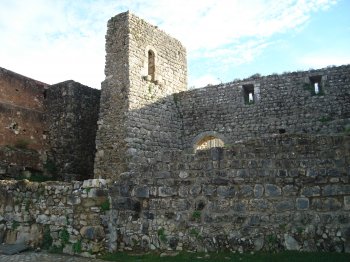
Castelo da Furna
- heritage
Rua do Castelo Faião
4930-070, Boivão
The Château de Fraião constituted a significant example of Romanesque fortress, but not adapted in the Gothic era. Thus, when from the beginning of the 13th century all the regional strategic interest shifted to the line of the river Minho-especially to Valença and Monsoon-was sidelined. Currently, only remains of the Castle a granitic suite, which provides magnificent views of the Minho Valley.
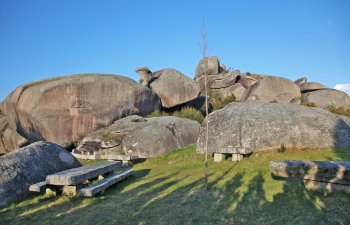
Castelo da Sertã
- heritage
Miradouro do Castelo
6100-631, Sertã
Mountain Castle, medieval type, with walls of schist. Inside, it has a quadrangular Tower and Church nave only, with narrower chancel and Bell Tower-Church of Saint John the Baptist. The castle was abandoned for centuries and only in the year 1998 was rebuilt. The original monument kept the tower and some of the wall cloths in shale. The Foundation of this fortification is ascribed to Sertorius. It was rebuilt by count Dom Henrique and, in 1174, was donated by his son to the Hospitallers.

Castelo de Alandroal
- heritage
Rua Diogo Lopes Sequeira
7250-116, Alandroal
With an important medieval castle donjon. This fortification worth mentioning the door flanked by towers and a horseshoe arch, marble in the region. In the tower and chain on the door Cool there are remains of Moorish architecture and Gothic commemorative tombstones of the work. Situated on a site overlooking the town, this may be seen a beautiful landscape of the region.
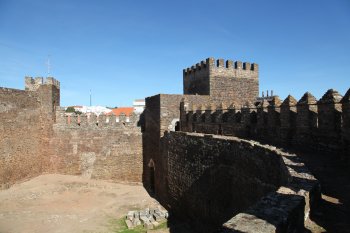
Castelo de Alcanede
- heritage
Rua da Encosta do Castelo
2025, Alcanede
The primitive Castle, rebuilt in the 13th century, suffered considerable damage in the 1531 earthquake. In 1954 there were works to consolidate the cloths between walls conserved integrally, the adarves and the Merlons, part of the keep and the Barbican. Juxtaposed to the main door there is an interesting sculpture, representing three castles and an eagle.
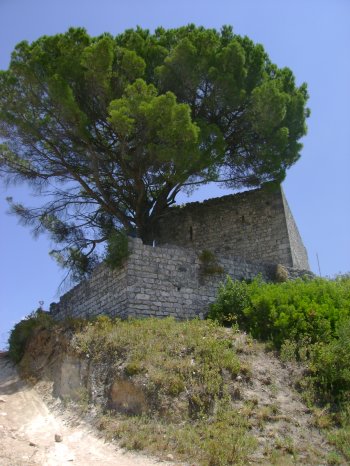
Castelo de Alcantarilha
- heritage
Travessa do Castelo
8365-019, Alcantarilha
Small section of a masonry defensive wall that stands back to back to modern buildings.
Castelo de Alcobaça
- heritage
Rua do Castelo, 35
2460-036, Alcobaça
Installed on a rise about 70 meters west of the monastery, Alcobaça Castle was sent to build by d. Afonso Henriques in 1147, on the presumed ruins of a fortification from the 6th century, as part of an important defensive line of the Lisbon region. Repeatedly devastated at the time of the Reconquista, d. Sancho ordered its reconstruction to house the monks alcobacenses and the population in the event of an attack. After suffering several earthquakes (1329, 1422 and 1563), turned out to serve as a prison in Filipes. Presenting itself in a State of ruin in the 18TH century, …
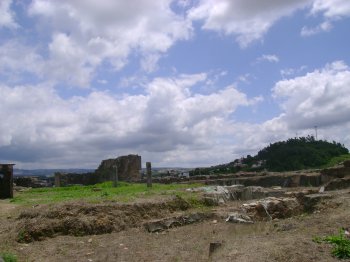
Castelo de Alcoutim
- heritage
Largo do Castelo, 4
8970-055, Alcoutim
Placed hanging over the river, it should have been inhabited during the Iron Age and in the beginning of the roman occupation, accordingly to archaeological digs. Built in the XIV century as a frontier defence, it was altered in the XVII century. Inside is a small museum showing archaeological founds and traces of the constructions found during the digs.
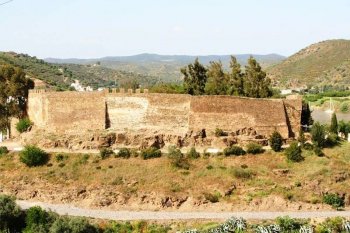
Castelo de Alegrete
- heritage
Alegrete
7300-126, Portalegre
Castle located in a border area that was the scene of many campaigns warriors. Amuralhamento construction of the fence, reinforced by towers semicilíndricas, due to a deal between the people of Alegrete and King Dinis: residents built the wall and the monarch would grant a Charter. Dinis, in addition to repopulate the village, built the Tower of homage, and in 1319, continued the work begun by his father, Dom Afonso III. At the front gate of the old fence, the clock of the old village.
